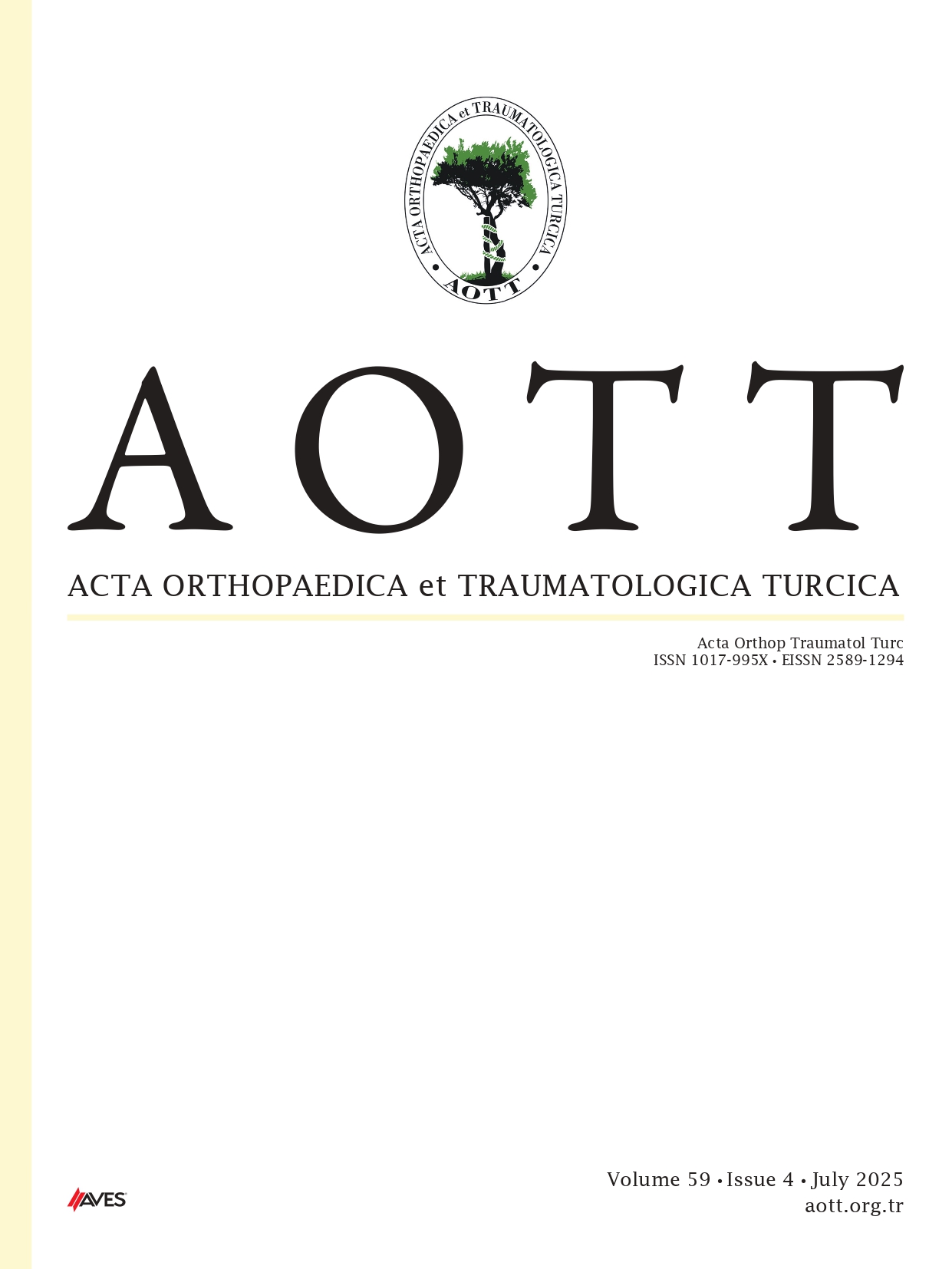Abstract
Objective: The aim of this study was to evaluate whether intertrochanteric femur fractures can be reduced and nailed properly in the lateral decubitus position using Proximal Femoral Nail Antirotation (PFNA) as a fixation device without the use of a traction table.
Methods: The study included 207 patients (81 male and 126 female; mean age: 75 years, range: 22 to 95 years). According to the Evans classification, there were 7 Type 1, 40 Type 2, 33 Type 3, 38 Type 4, 61 Type 5 and 28 reverse oblique fractures. Radiographs were used to measure the tip-apex distance (TAD), the quadrant of the helical blade according to Cleveland and Bosworth, Ikuta’s reduction subgroup, collodiaphyseal angle and reduction gaps postoperatively.
Results: Mean follow-up time was 20.4 (range: 6 to 38) months. According to Ikuta’s classification, 176 (85%) reduced fractures were of subtype N, 15 (7.2%) subtype P and 16 (7.7%) subtype A. Good or acceptable reduction according to the Herman criteria was obtained in 99% of fractures. Mean TAD was 29.2 millimeters. Mean operation time was 57.2 minutes. Optimal blade position (center-center or inferior-center) was achieved in 53.5% of patients and was in the superior-posterior quadrants in only 2.4% of patients. Cut-out complication occurred in 9 patients (4.3%).
Conclusion: While the nailing of intertrochanteric fractures in a lateral decubitus position does not provide ideal quadrant placement and TAD, results are encouraging probably due to the excellent stability that is provided by PFNA.
Özet
Amaç: Bu çalışmanın amacı, intertrokanterik femur kırıklarının Proksimal Femoral Çivi Antirotasyon (PFNA) kullanılarak, traksiyon masasız, lateral dekübit pozisyonda uygun bir şekilde redükte edilip tespit edilip edilemediğinin değerlendirilmesi idi.
Çalışma planı: Çalışmaya 81’i erkek, 126’sı kadın olmak üzere 207 hasta (ortalama yaş: 75, dağılım: 22-95) dahil edildi. Evans sınıflamasına göre; 7 Tip 1, 40 Tip 2, 33 Tip 3, 38 Tip 4, 61 Tip 5 ve 28 ters oblik kırık mevcuttu. Ameliyat sonrası röntgenlerde; implant ucu-apeks mesafesi, helikal bıçağın Cleveland ve Bosworth kadranı, Ikuta redüksiyon alt grubu, kollodiyafizer açı ve redüksiyon aralıkları ölçüldü.
Bulgular: Ortalama takip süresi 20.4 (dağılım: 6-38) ay olan hastalarda Ikuta sınıflamasına göre 176 kırık (%85) normal alt tip, 15 kırık (%7.2) posterior alt tip ve 16 kırık (%7.7) anterior alt tip olarak redükte edilmişti. Herman kriterlerine göre hastaların %99’unda iyi veya kabul edilebilir redüksiyon sağlandığı görüldü. Ortalama implant ucu-apeks mesafesi 29.2 mm, ortalama ameliyat süresi 57.2 dakika olarak ölçüldü. Uygun kadran (merkez-merkez, alt-merkez) yerleşimi hastaların %53.5’inde sağlanmışken, üst-arka kadran yerleşimi hastaların sadece %2.4’ünde görüldü. Dokuz hastada (%4.3) sıyrılma komplikasyonu gerçekleşti.
Çıkarımlar: İntertrokanterik kırıkların lateral dekübit pozisyonda çivilenmesi uygun kadran yerleşiminin sağlanması ve implant ucu-apeks mesafesinde ideal değerlerin elde edilmesinde başarılı olmasa da, muhtemelen PFNA tarafından sağlanan mükemmel stabilite sayesinde sonuçlar cesaret vericidir.



.png)
.png)
